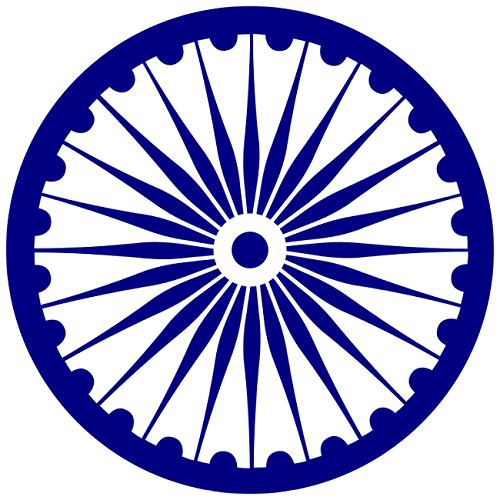An emblem is “a symbolic object as a distinctive badge of a nation, family, or organization.” The National Emblem of an India is a seal that is kept for official use by the state. For a country, the national emblem of India is a symbol of authority and represents the basis of its legal philosophy.

Based on: The Lion Capital the Ashoka Pillar of Sarnath
Slogan: Satyameva Jayate/ Truth Alone Triumphs
Adopted by: Madhav Sawhney
Adopted on: January 26, 1950
Introduction
National Emblem of India is an approval of the Lion Capital the Ashoka Pillar of Sarnath, Uttar Pradesh. It is combined with the National Motto Satyameva Jayate. The Lion Capital was adopted as the National Emblem of India on 26, January 1950. It was an announcement of the newly acquired Republic status of India. The National Emblem of India is used for official purposes only and demands genuine respect from the citizens of India. It acts as the official authorization for all national and state government offices. The necessary part of any letterhead used by the govt.
It emphasizes prominently on all currency notes as well as on sensitive identification, documents like the passports issued by the Republic of India. The National Emblem is the symbol of freedom for India.
Description
The National Emblem of India is the graphic representation of the Lion Capital. It is originally graced the top of the Ashoka Pillar at Sarnath along with the National slogan written below it. The Lion Capital raising the Ashok Pillar is carved out of a single block of yellow sandstone. features four Asiatic Lions sitting back to back.
The two-dimensional representation of National Emblem describes only 3, the fourth lion is invisible from view. The 4 lions stand on a short cylindrical base that has four dharma Chakras corresponding to each lion reliefs and bust of four more animals in between them – the lion, the horse, the elephant, and the bull.
In the National Emblem, only one dharma Chakra is visible in the front with the galloping the bull on the right of it and the horse on the left of it. The Ashok Chakra is a form of the Buddhist Dharma Chakra. The exact Lion Capital sits on an inverted lotus abacus which has not been included in the National Emblem representation.
Instead, below the description of the Lion Capital, the words Satyameva Jayate is written in Devnagari Script. It is also the National slogan of India.
History of the National Emblem
The history behind the National Emblem’s influence dates back to the 3rd Century BC. Emperor Ashoka, after a colossal battle in Kalinga, considered his life strategies. Filled with regret, he opted the path of non–violence and Buddhism.
After that, instead of conquests and wars, he made non-violence, spiritualism, compassion, and peaceful co-existence the cornerstones of his administration.

The pillar had sunk into the ground and wasn’t visible. German born civil engineer Friedrich Oscar Oertel started excavation of the area. Following the accounts of Chinese travelers during the medieval age.
The holes started in December 1904 and ended in April 1905. He found the Ashoka Pillar of Sarnath in March 1905, and the whole pillar was found in three sections. The topmost Lion Capital was found entire and is currently displayed in the Sarnath Museum.
Symbolism
The Ashoka Pillar and the Lion capital on top of it were built by Emperor Ashoka to mark the spot where Buddha first disseminated his ‘Bodhi’ to disciples. His gospel of peace, tolerance, and emancipation from worldly attachments became the basis of life of penance. When he embraced Buddhism.
By adopting this sculpture as the National Emblem, the Republic of India recognizes its allegiance to the philosophies of Buddha, attested the positive changes Ashoka brought to his kingdom and reaffirmed its commitment towards supporting tolerance and peace.

The 4 lions of the capital connected back to back symbolize stress on equality and justice in all spheres of life. The 4 lions are also representative of the 4 core philosophical beliefs of Buddha. Since Buddha himself is symbolized as a lion. The 3 lions visible on the capital representation in the National Emblem signify Strength, Courage, and Confidence. It also means constant diligence overall 4 directions. The circular base below the lions further upholds specific symbolism.
Twenty-four spokes of the Chakra represent the number of hours in a day and portray the passage of time. The 4 animals depicted alternatively between the chakras are regarded as the guardians of 4 directions. The lion for the north, the horse for the south, the bull for the west, and the elephant for the east.
RULES AND REGULATIONS :
The national emblem of India serves as a source of inspiration to over 1 billion Indians provoking a sense of pride in their hearts. The emblem is the signature of the authority of the Govt of India, and thus its misuse by illegal persons needs to be restricted.
- National Emblem Prohibition of Improper Use Act, 2005, prohibits inappropriate use of National Emblem of India For commercial and professional purposes. Anybody found guilty of such disrespect may face imprisonment up to 2 years and monetary fine that may go up to 5000 rupees.
Make sure also check our other amazing articles on General Knowledge.

